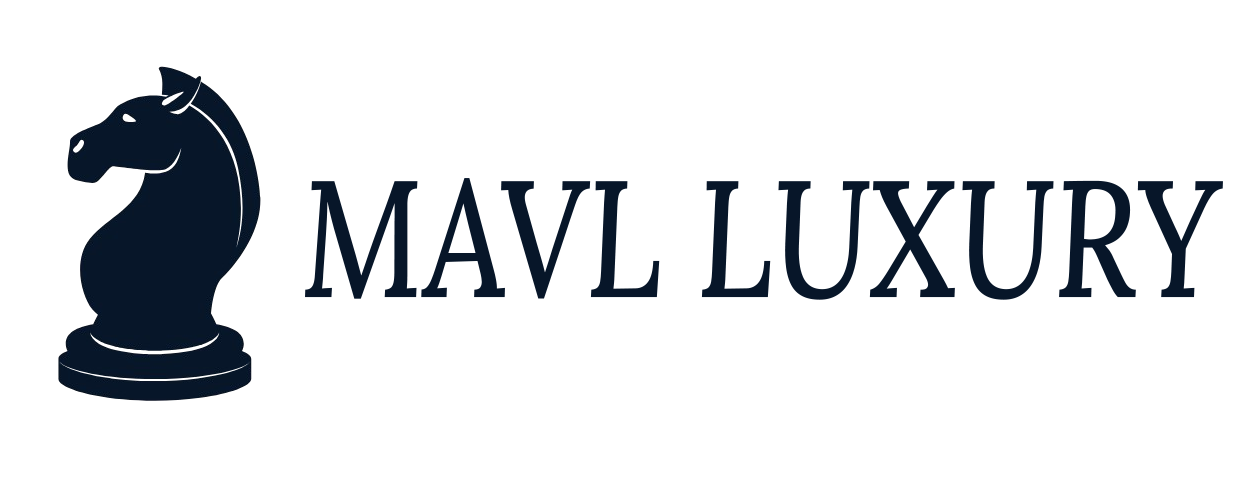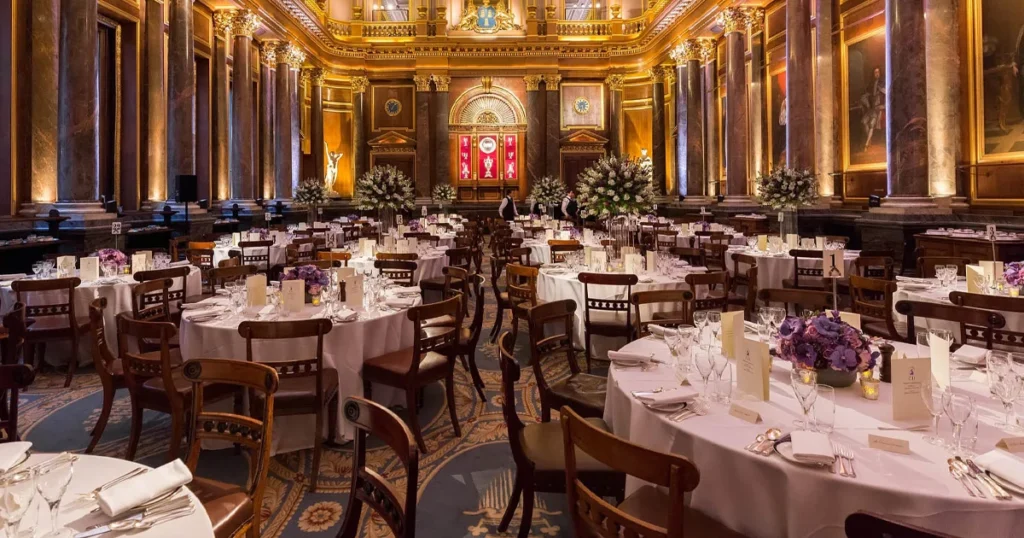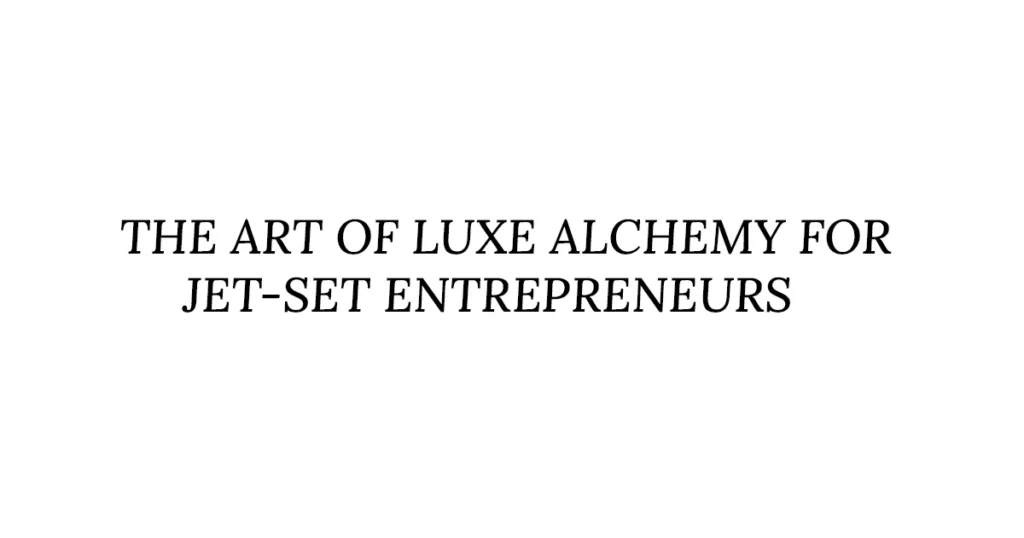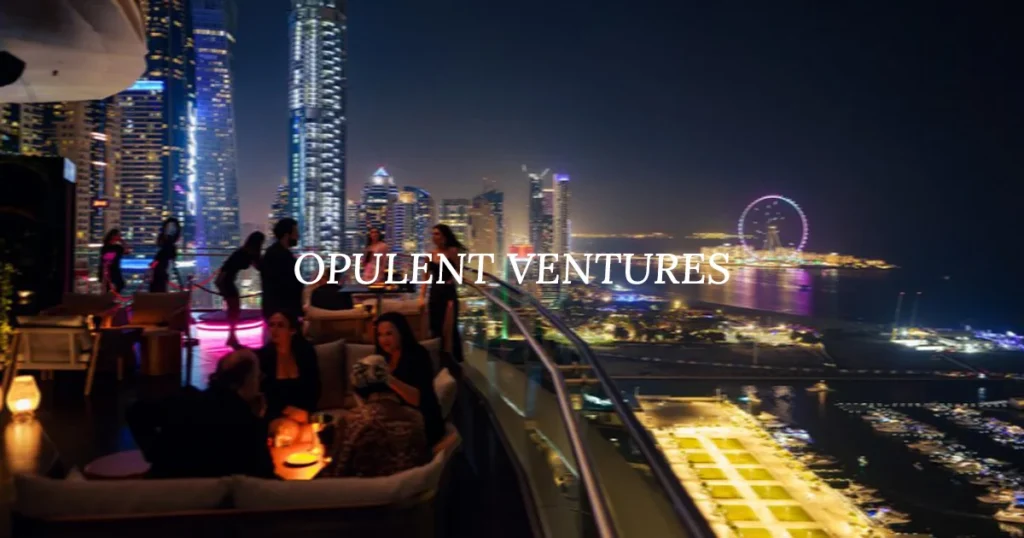The Gilded Grind: Unveiling Lucrative Luxury Side Hustles for the Discerning Entrepreneur
I. Introduction: The Allure of Luxury in the Gig Economy
The gig economy, once synonymous with ride-sharing and freelance tech work, has evolved into a dynamic ecosystem encompassing even the most exclusive corners of the market. As digital platforms democratize access to services, a new frontier has emerged: luxury. This shift coincides with the meteoric rise of high-net-worth individuals (HNWIs), whose demand for exclusivity and hyper-personalized experiences is reshaping industries. According to a 2023 report by Statista, the global gig economy has surged to over $455 billion, with luxury sectors from bespoke travel to artisanal craftsmanship capturing an increasing share of this growth. Simultaneously, the number of HNWIs has climbed to 23.8 million worldwide, driven by tech entrepreneurs, investors, and creatives who prioritize uniqueness and value alignment in their consumption.
The Discerning Entrepreneur
At the heart of this transformation lies the discerning entrepreneur : affluent, purpose-driven professionals who view their ventures as extensions of their identity. Unlike traditional investors, they seek passion projects that blend financial returns with personal fulfillment. These individuals are not merely purchasing luxury; they are curating lifestyles and legacies. Their ethos revolves around authenticity, craftsmanship, and exclusivity, often gravitating toward ventures that mirror their values, such as sustainability or social impact. For them, the gig economy offers a gateway to niche markets, enabling collaborations with independent artisans, luxury consultants, and bespoke service providers who deliver unmatched quality and customization.
Why Luxury?
The allure of luxury in this context is multifaceted. First, the demand for personalized experiences has skyrocketed, with 72% of HNWIs willing to pay a premium for tailored services, according to a Knight Frank survey. Platforms connecting clients with elite gig workers private chefs, luxury event planners, or sustainable fashion designers capitalize on this desire for individuality. Second, sustainability has transitioned from a buzzword to a non-negotiable criterion. Ethical sourcing, carbon-neutral production, and artisanal craftsmanship resonate deeply with values-driven consumers, fostering loyalty in a crowded market. Finally, luxury’s emotional appeal lies in its storytelling. A handcrafted watch or a curated safari isn’t just a product; it’s a narrative of heritage, innovation, and exclusivity. In the gig economy, where flexibility meets aspiration, luxury becomes a medium for entrepreneurs to craft not just wealth, but meaning.
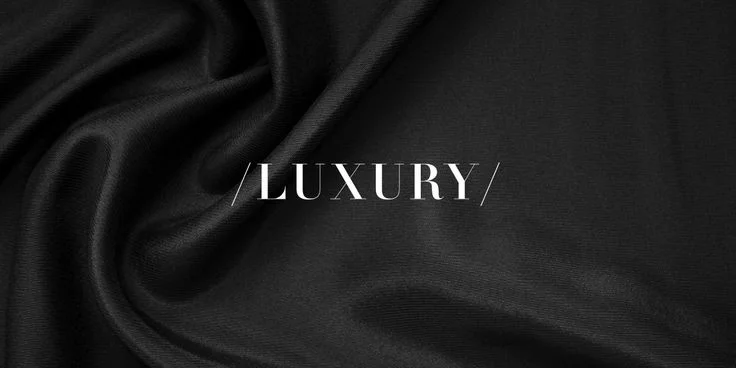
II. The Rise of the Discerning Entrepreneur
The entrepreneurial landscape is undergoing a transformative shift as a new breed of business leaders discerning entrepreneurs prioritize purpose, authenticity, and niche appeal over conventional career paths. This evolution reflects a broader cultural reorientation toward meaningful work, driven by changing consumer values and a growing appetite for luxury experiences rooted in uniqueness and ethical integrity.
Shift in Mindset: From Traditional Careers to Curated Ventures
The rise of the discerning entrepreneur marks a departure from traditional corporate careers in favor of ventures that align with personal values and passions. Factors such as pandemic-induced introspection, Gen Z’s demand for purpose-driven work, and widespread burnout in high-pressure industries have fueled this shift. Entrepreneurs are increasingly curating businesses that offer autonomy, creativity, and a sense of legacy.
For example, a former finance professional might launch a sustainable fashion brand emphasizing slow production, or a tech veteran could pivot to founding a wellness retreat focused on mental health. These ventures prioritize impact over income alone , reflecting a desire to merge professional fulfillment with societal contribution. This mindset shift is also evident in the rise of B Corps and social enterprises, where profit and purpose coexist.
Authenticity & Niche Appeal: The Luxury Entrepreneur’s Edge
In the luxury sector, discerning entrepreneurs thrive by leveraging unique skills, heritage, and storytelling to carve out distinct niches. Unlike mass-market brands, they emphasize craftsmanship, exclusivity, and emotional resonance. Key strategies include:
- Heritage & Craftsmanship : Brands like Hermès or family-owned wineries (e.g., Château Margaux) highlight generations of expertise, transforming products into heirlooms.
- Storytelling : Entrepreneurs weave narratives around their creations such as a Swiss watchmaker reviving 19th-century techniques to foster emotional connections with consumers.
- Sustainability & Ethics : Discerning luxury buyers increasingly demand transparency. Brands like Stella McCartney (vegan luxury) or smaller artisans using recycled materials meet this need while maintaining premium positioning.
By prioritizing authenticity, these entrepreneurs cater to affluent consumers seeking “quiet luxury” understated, value-driven products that reflect their identity.
Market Opportunity: Capitalizing on Luxury’s Growth Trajectory
The luxury market’s explosive growth underscores the potential for discerning entrepreneurs. According to Bain & Company’s 2023 Luxury Study , the global personal luxury goods market surpassed €1.5 trillion (≈$1.6 trillion) in 2023, with a 6-8% annual growth projected through 2025. Key drivers include:
- Emerging Markets : China’s middle class and Gen Z’s spending power in Asia-Pacific are reshaping demand.
- Experiential Luxury : High-net-worth individuals increasingly invest in bespoke travel, fine dining, and art.
- Digital Transformation : Online sales now account for 20% of luxury purchases, with virtual showrooms and AI-driven personalization enhancing accessibility.
Within this landscape, niche players thrive by offering hyper-curated products from handcrafted leather goods to rare spirits that larger brands cannot replicate. For instance, small-batch perfume houses or carbon-neutral yacht charters cater to consumers weary of mass-produced offerings.
III. Characteristics of a Luxury Side Hustle
Luxury side hustles stand apart from conventional businesses due to their emphasis on exclusivity, craftsmanship, and elevated customer experiences. These ventures are not just about making money they’re about creating value through uniqueness, quality, and personal touch. Below are the defining characteristics that set luxury side hustles apart:
1. High Barriers to Entry
A hallmark of any luxury side hustle is its high barrier to entry, which ensures scarcity and positions it as an exclusive offering. This can manifest in several ways:
- Specialized Skills : Mastery over niche skills such as haute couture sewing, fine jewelry design, or bespoke perfumery creates a competitive advantage.
- Capital Investment : Access to rare materials (e.g., exotic leathers, precious gemstones) or cutting-edge technology often requires significant upfront investment.
- Connections & Certifications : Building relationships with suppliers, artisans, or industry insiders may be crucial. Additionally, certifications like sommelier training, master watchmaker credentials, or organic farming accreditations add credibility and trust.
For example, a side hustle selling handcrafted leather goods might source ethically-tanned hides from Italy while employing age-old techniques passed down through generations skills unavailable to most competitors.
2. Exclusivity & Scarcity
The appeal of luxury comes from its exclusivity. By controlling supply and maintaining strict standards, luxury side hustles create desire and elevate perceived value.
- Limited Editions : Offering only a few pieces per collection fosters urgency among buyers who want something truly unique.
- Bespoke Designs : Custom-made products tailored specifically for each client ensure no two items are identical, enhancing exclusivity.
- Invitation-Only Access : Restricting access to select clients for instance, via private showings or membership clubs creates a sense of privilege and belonging.
Consider a luxury candle maker who produces small batches of scents inspired by rare botanicals sourced globally; these candles become coveted for their rarity and artistry.
3. Premium Pricing & Margins
Luxury side hustles justify higher price points through exceptional craftsmanship, storytelling, or experiential elements. Customers don’t merely buy a product they invest in the intangible aspects tied to it.
- Craftsmanship : Each piece is meticulously crafted, often by hand, ensuring unparalleled quality and attention to detail.
- Branding : A strong brand identity built on heritage, innovation, or sustainability adds emotional weight to purchases.
- Experiences : Whether it’s unboxing a beautifully packaged item or enjoying personalized consultations, every interaction reinforces the premium nature of the offering.
For instance, a custom suit tailor could charge thousands for a single garment because they use the finest fabrics, provide detailed fittings, and deliver a one-of-a-kind fit unmatched by off-the-rack options.
4. Personalization
In the world of luxury, personalization is key to building deep connections with clients. Tailored services make customers feel seen and valued, turning transactions into meaningful relationships.
- Monogramming & Engraving : Adding initials or custom messages transforms ordinary items into cherished keepsakes.
- Custom-Fit Solutions : From made-to-measure clothing to individually curated skincare regimens, customization caters to individual preferences and needs.
- Collaborative Design : Allowing clients to co-create their purchases choosing colors, patterns, or finishes enhances satisfaction and loyalty.
Imagine a luxury stationery business where clients can design their own embossed notebooks with specific paper types, bindings, and cover designs, resulting in completely personalized creations.
5. Concierge-Level Service
Exceptional service is non-negotiable in luxury side hustles. Clients expect seamless, attentive interactions at every step of their journey.
- White-Glove Delivery : Products arrive impeccably packaged, sometimes accompanied by handwritten notes or complimentary gifts.
- 24/7 Client Support : Round-the-clock assistance reassures clients that their needs will always be met promptly.
- Anticipatory Service : Going above and beyond expectations such as remembering birthdays or preferences builds lasting rapport.
Take, for example, a luxury pet boutique offering personalized grooming sessions, home delivery of gourmet pet food, and even virtual consultations with veterinarians for discerning pet owners.
6. Brand Storytelling
Every successful luxury side hustle tells a compelling story that resonates emotionally with its audience. Authentic narratives differentiate brands and foster loyalty.
- Heritage : Highlighting decades of tradition or family legacies evokes nostalgia and trust.
- Sustainability : Emphasizing eco-friendly practices appeals to socially conscious consumers.
- Philanthropy : Supporting charitable causes aligns the brand with values that matter to its clientele.
A luxury tea company might share tales of sourcing leaves from remote mountain regions, supporting local farmers, and preserving ancient cultivation methods all of which enhance the brand’s appeal.
IV. Top Luxury Side Hustles for Discerning Entrepreneurs
In an era where exclusivity and personalization reign supreme, luxury side hustles offer entrepreneurs the chance to cater to high-net-worth individuals (HNWIs) seeking bespoke experiences. These ventures blend creativity, technology, and elite networking to deliver unparalleled value. Below are eight lucrative opportunities for those aiming to thrive in the luxury market.
1. Personal Luxury Stylist/Shopping Concierge
Why It Works: HNWIs crave wardrobes that reflect their unique identity. Stylists curate personalized looks, source rare designer pieces, and manage shopping logistics.
Key Aspects: Partnerships with luxury brands, virtual consultations, and access to exclusive collections.
Tip: Start by building relationships with niche designers and offer capsule wardrobe audits to attract clients seeking timeless elegance.
2. Bespoke Travel Planning
Why It Works: Affluent travelers demand privacy, convenience, and unforgettable moments. Services include private jet charters, villa rentals in hidden gems, and VIP access to events like Fashion Week or art fairs.
Key Aspects: Tailored itineraries, 24/7 concierge support, and sustainability-focused journeys (e.g., eco-lodges).
Tip: Collaborate with luxury travel agencies to offer “off-menu” experiences, such as a sunset helicopter tour over Santorini.
3. Artisanal Craftsmanship
Why It Works: Handmade, limited-edition items (e.g., jewelry, furniture, art) appeal to clients valuing heritage and authenticity.
Key Aspects: Storytelling through craftsmanship, collaborations with artists, and pop-up exhibitions.
Tip: Leverage Instagram to showcase behind-the-scenes creation processes, emphasizing the artistry behind each piece.
4. High-End Wellness Coaching
Why It Works: Holistic health is a priority for HNWIs. Services range from biohacking retreats to personalized nutrition plans and luxury fitness training.
Key Aspects: Integrating wearable tech for data-driven insights, partnerships with wellness resorts, and longevity-focused programs.
Tip: Offer immersive retreats in exotic locales, combining spa treatments with mindfulness workshops.
5. Luxury Event Curation
Why It Works: From destination weddings to corporate galas, clients seek events that dazzle.
Key Aspects: Unique venues (castles, private islands), thematic decor, and celebrity entertainment.
Tip: Specialize in niche themes (e.g., Renaissance-inspired weddings) to stand out in a crowded market.
6. Private Chef & Culinary Experiences
Why It Works: Gourmet dining is an art form. Offer meal kits with premium ingredients, pop-up dinners, or wine-pairing masterclasses.
Key Aspects: Dietary customization, collaborations with Michelin-starred chefs, and farm-to-table storytelling.
Tip: Host “culinary journeys” where each course represents a different global cuisine.
7. Luxury Real Estate Concierge
Why It Works: Elite clients need assistance with property sourcing, staging, and interior design.
Key Aspects: Access to off-market listings, virtual reality tours, and sustainability-focused renovations.
Tip: Partner with architects to offer turnkey solutions for second homes or investment properties.
8. Tech-Driven Luxury Solutions
Why It Works: Custom apps and AI assistants streamline luxury living, from managing schedules to securing reservations.
Key Aspects: Blockchain for secure transactions, AR/VR for virtual previews, and IoT-integrated smart homes.
Tip: Develop niche apps, like a concierge service for yacht owners or crypto investors.

V. Strategies for Success in Luxury Ventures
Luxury ventures thrive on distinction, exclusivity, and emotional resonance. To carve a niche in this competitive space, brands must deploy strategies that amplify their unique value while fostering deep connections with affluent audiences. Below are five key strategies for success:
1. Brand Building: Crafting a Legacy of Heritage, Craftsmanship, or Exclusivity
A compelling narrative is the cornerstone of luxury branding. Luxury consumers seek stories that evoke emotion, authenticity, and timelessness.
- Heritage : Leverage historical roots to create a sense of legacy (e.g., Rolls-Royce’s “Best Car in the World” ethos or Rolex’s association with exploration milestones).
- Craftsmanship : Highlight meticulous artistry, such as Hermès’ hand-stitched leather goods or Patek Philippe’s generational watchmaking.
- Exclusivity : Position offerings as rare or bespoke, like Ferrari’s limited-edition supercars or Chanel’s haute couture collections.
Why it works : A strong narrative differentiates the brand and fosters loyalty among discerning clients.
2. Networking: Infiltrating Affluent Circles
Building relationships with high-net-worth individuals (HNWIs) requires strategic access to exclusive spaces and communities.
- Exclusive Events : Sponsor or participate in charity galas (e.g., The Met Gala), art fairs (Art Basel), or polo tournaments to mingle with affluent audiences.
- Private Clubs : Partner with members-only clubs like Soho House or The Ritz-Carlton Rewards to engage clients in curated environments.
- LinkedIn Thought Leadership : Share insights on luxury trends or sustainability to position executives as industry authorities and connect with decision-makers.
Example : Luxury watch brand Patek Philippe hosts invite-only exhibitions to engage collectors and influencers.
3. Digital Presence: Elevating Storytelling and Exclusivity
Luxury brands must balance aspirational digital content with gated access to maintain exclusivity.
- High-Quality Content : Use Instagram Reels and YouTube for cinematic storytelling (e.g., Dior’s behind-the-scenes ateliers or Gucci’s surreal fashion films).
- Gated Communities : Offer membership platforms (e.g., Luxury Retreats’ villa bookings or Neiman Marcus’ InCircle rewards) for exclusive previews, virtual events, or personalized services.
Key tactic : Maintain visual consistency and scarcity tease limited collections online while reserving purchases for select clients.
4. Client Experience: Surprise-and-Delight Tactics
Exceptional service transforms one-time buyers into lifelong advocates.
- Personalized Touches : Send handwritten notes, monogrammed packaging, or birthday gifts (e.g., The Ritz-Carlton’s legendary turndown amenities).
- Post-Purchase Engagement : Offer VIP access to events or concierge services (e.g., Aston Martin’s driving experiences for owners).
- Anticipate Needs : Use client data to tailor recommendations, like Net-a-Porter’s “You Might Like” luxury styling suggestions.
Result : Clients feel uniquely valued, driving word-of-mouth referrals and repeat purchases.
5. Sustainability & Ethics: Aligning with Conscious Luxury
Modern luxury consumers demand accountability without compromising on opulence.
- Eco-Friendly Practices : Highlight carbon-neutral production (e.g., Rolex’s green hydrogen-powered facilities) or zero-waste packaging.
- Ethical Partnerships : Collaborate with certified suppliers (e.g., Chopard’s ethical gold or Stella McCartney’s vegan leather).
- Philanthropy : Tie collections to social causes (e.g., Chloé’s partnership with UNICEF or Montblanc’s literacy initiatives).
Why it matters : Sustainability becomes a status symbol, appealing to values-driven elites.
VI. Challenges & Considerations
1. High Expectations: Managing Demanding Clients and Delivering Perfection
Luxury clients often seek not just products but experiences that reflect exclusivity, craftsmanship, and status. Their expectations are uncompromising: flawless quality, hyper-personalized service, and seamless interactions at every touchpoint. Businesses must invest in highly skilled artisans, rigorous quality control, and client relationship management to meet these demands. For instance, luxury fashion houses may employ dedicated concierge teams or offer bespoke customization, ensuring each client feels uniquely valued. However, the pressure to deliver perfection can strain resources, requiring a balance between meticulous attention to detail and operational efficiency. Training staff to anticipate needs and handle complaints with finesse is critical to maintaining trust and loyalty.
2. Balancing Exclusivity & Growth: Scaling Without Diluting Brand Prestige
Growth is essential for profitability, but luxury brands risk losing their allure if they become too accessible. The challenge lies in expanding market reach while preserving an aura of rarity. Strategies include:
- Limited Editions: Releasing exclusive collections (e.g., Hermès’ seasonal scarves) to create urgency without mass production.
- Selective Distribution: Partnering with high-end retailers or operating standalone boutiques to control brand presentation.
- Strategic Collaborations: Teaming with like-minded luxury brands or artists to enhance prestige (e.g., Louis Vuitton x Supreme).
Data-driven insights can identify untapped markets, but scaling must prioritize quality over quantity. Overextension—such as excessive licensing or discounting can erode brand equity, making disciplined growth paramount.
3. Cash Flow Management: Navigating Upfront Costs for Materials or Talent
Luxury goods often require premium inputs: rare materials (e.g., ethically sourced diamonds), skilled artisans, or visionary designers. These costs are incurred long before revenue is generated, creating cash flow volatility. For example, a haute couture atelier may spend months sourcing fabrics and labor before a collection debuts. Mitigation strategies include:
- Pre-Orders and Deposits: Securing partial payments upfront to fund production.
- Inventory Optimization: Using just-in-time manufacturing to reduce excess stock.
- Partnerships with Investors or Lenders: Accessing short-term financing tailored to luxury sectors.
Forecasting demand accurately is critical, as overproduction can lead to markdowns that harm exclusivity, while underproduction risks losing sales.
4. Regulatory Hurdles: Compliance in Luxury Sectors
The global luxury market faces complex regulations, particularly for international trade. Customs duties, import/export restrictions, and authenticity certifications (e.g., CITES permits for exotic skins) can delay shipments and inflate costs. Additionally, evolving sustainability laws (e.g., EU’s due diligence on supply chains) and labor standards require rigorous compliance. Brands must:
- Invest in Legal Expertise: Employ specialists to navigate tariffs, labeling, and ethical sourcing requirements.
- Adopt Compliance Technology: Use blockchain for transparent supply chain tracking or AI tools to monitor regulatory changes.
- Localize Strategies: Adapt products to regional regulations (e.g., avoiding certain materials in markets with strict biodiversity laws).
Non-compliance risks reputational damage and financial penalties, making proactive adherence a necessity rather than a choice.

VII. Case Studies & Inspiration
Explore how niche brands leverage creativity and strategic partnerships to thrive in competitive markets. Below are two success stories highlighting innovative approaches to marketing and collaboration.
Success Story 1: Bespoke Watchmaker Masters Instagram to Captivate Global Collectors
Brand: LuxHorlogerie (hypothetical), a Swiss-based artisanal watchmaker specializing in custom, handcrafted timepieces.
Challenge:
As a niche brand, LuxHorlogerie struggled to reach affluent collectors outside traditional markets. They needed a cost-effective way to showcase intricate craftsmanship and build a loyal community.
Strategy:
- Visual Storytelling: High-resolution images and Reels highlighted the meticulous watchmaking process, from engraving to assembly.
- Niche Targeting: Used Instagram’s geo-targeted ads to reach luxury buyers in key markets (e.g., the U.S., Japan, UAE).
- Behind-the-Scenes Content: Shared videos of artisans at work, emphasizing heritage and exclusivity.
- Collaborations: Partnered with micro-influencers in the horology space for authentic endorsements.
Results:
- 300% follower growth in 6 months.
- 40% increase in custom orders from international clients.
- Features in GQ and HODINKEE , boosting credibility.
Key Takeaway:
Visual platforms like Instagram are ideal for luxury brands to humanize craftsmanship and connect with global audiences through storytelling and precision targeting.
Success Story 2: Sustainable Fashion Brand Amplifies Impact with Eco-Conscious Celebrities
Brand: EcoChic Collective (hypothetical), a zero-waste fashion brand using recycled materials.
Challenge:
Despite growing demand for sustainability, EcoChic struggled to differentiate itself in a crowded market. They needed to elevate brand trust and reach eco-aware consumers.
Strategy:
- Celebrity Partnerships: Collaborated with actress Emma Watson and environmental activist Leonardo DiCaprio for a capsule collection.
- Authentic Messaging: Celebrities shared personal stories about sustainability via Instagram takeovers and YouTube documentaries.
- Transparency Campaigns: Highlighted supply chain ethics and carbon-neutral practices in partnership posts.
- Limited-Edition Drops: Created buzz with exclusive designs promoted through celeb-owned social channels.
Results:
- 200% surge in website traffic during campaign weeks.
- Sold out capsule collection within 72 hours.
- 3x social media engagement and features in Vogue Sustainability Edition .
Key Takeaway:
Aligning with influencers who share your values can amplify authenticity, drive conversions, and position your brand as a leader in purpose-driven markets.
VIII. Conclusion: The Golden Opportunity
The luxury market is not merely a playground for the affluent it’s a realm of untapped potential for entrepreneurs who dare to blend passion with purpose. As we’ve explored, the discerning entrepreneur thrives where creativity meets strategy, and where authenticity becomes the ultimate currency. The call to action is clear: identify the gaps in the luxury landscape that align with your unique skills and values . Whether it’s curating rare artifacts for collectors, designing tech-driven solutions for high-net-worth clients, or reimagining sustainable luxury, the opportunities are as limitless as your vision.
Final Thought : Success in this space demands more than a keen eye for trends it requires a trifecta of creativity to innovate, strategy to navigate exclusivity, and authenticity to build trust. The golden opportunity lies in crafting ventures that resonate deeply with clients’ desires for meaning and distinction. For those willing to embrace this challenge, the reward is twofold: financial prosperity and the satisfaction of shaping a legacy that transcends the ordinary. The gilded grind awaits are you ready to seize it?
for more articles visit Mavlluxury
